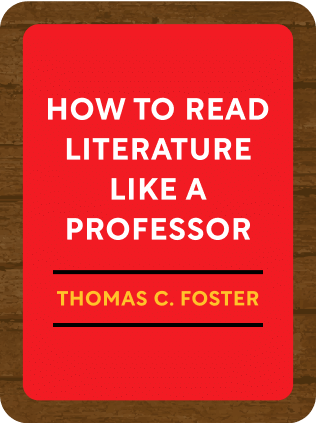

This article is an excerpt from the Shortform book guide to "How to Read Literature Like a Professor" by Thomas C. Foster. Shortform has the world's best summaries and analyses of books you should be reading.
Like this article? Sign up for a free trial here .
What does it mean when an author includes a blind character in literature? How do authors sometimes include metaphorical blindness?
Blind characters are difficult to write because the author needs to describe how that character will navigate the world. So why write a blind character? Because both literal and metaphorical blindness are important symbols in literature.
Keep reading to learn more about what blindness means in literature.
Blindness in Literature
Writing a blind character into a story comes with a lot of complications to the author—such as how the character will move around and be a part of the narrative. For that reason, when you see blindness in literature, take notice. A blind character is a sign that themes of metaphorical blindness, sight, or insight will be issues in the work.
Many novels have themes of blindness versus sight, but not all of them have a blind character. So why do some authors feel the need to add a blind character into their writing? Simply put, to make the theme more obvious for the reader.
Once you see a blind character in a novel, you’ll instinctively look out for metaphorical blindness, as well. As a result, you’ll be more observant of the language and imagery that the author uses to depict that theme throughout the story.
- Example: In James Joyce’s Araby, the very first sentence contains the word “blind.” That alerts the reader to be on the lookout for other references to blindness versus sight. Throughout the story, the main character is using his sight in different ways: peeking out from behind “blinds,” being “blinded” by his own tears, and mentally envisioning himself as a hero.
Without a direct mention of blindness in a story, readers might not know the right questions to ask while reading—like why is the author making use of language related to sight and blindness? By making the theme more obvious with the use of a blind character, the author is guiding the reader on how to read the novel.
Sophocles’ Oedipus Rex
For example, in Oedipus Rex, the title character kills his father and marries his mother. Because Oedipus is blind to his own identity, he is blind to his crimes—he even volunteers to hunt down the criminal. He summons someone to come in and help him shed light on the mystery. And when this information specialist arrives, we see that the specialist is literally blind.
While it is the information specialist that lacks sight in the literal sense, it is Oedipus who is figuratively blind to his own circumstances. When the truth finally comes to light (another use of language that suggests sight in the metaphorical sense), Oedipus is so distraught that he blinds himself.
In Sophocles’ later work Oedipus at Colonus, we see that Oedipus has suffered through his blindness for years. But he has come to earn favor in the eyes of the gods, and he dies a respectable death. Finally, Oedipus has developed a kind of vision that he never had while he actually had use of his eyes.

———End of Preview———
Like what you just read? Read the rest of the world's best book summary and analysis of Thomas C. Foster's "How to Read Literature Like a Professor" at Shortform .
Here's what you'll find in our full How to Read Literature Like a Professor summary :
- How to get more out of the novels that you read
- Why you should focus on memory, symbols, and patterns to understand literature better
- Why sex scenes aren't always about sex






